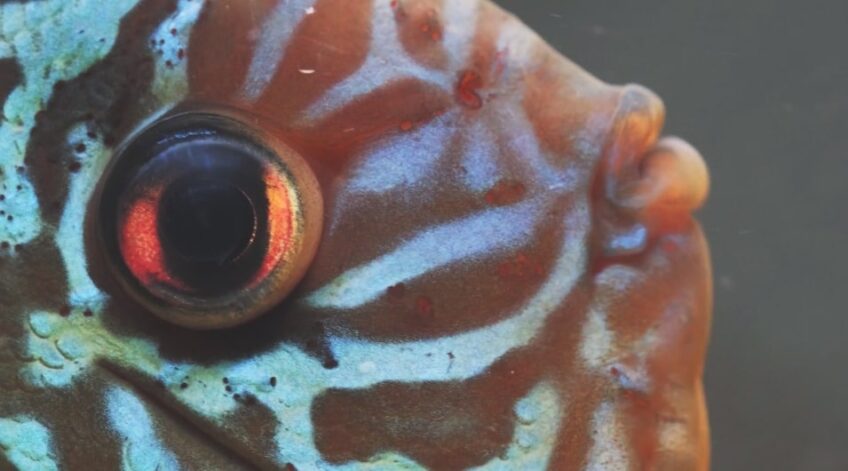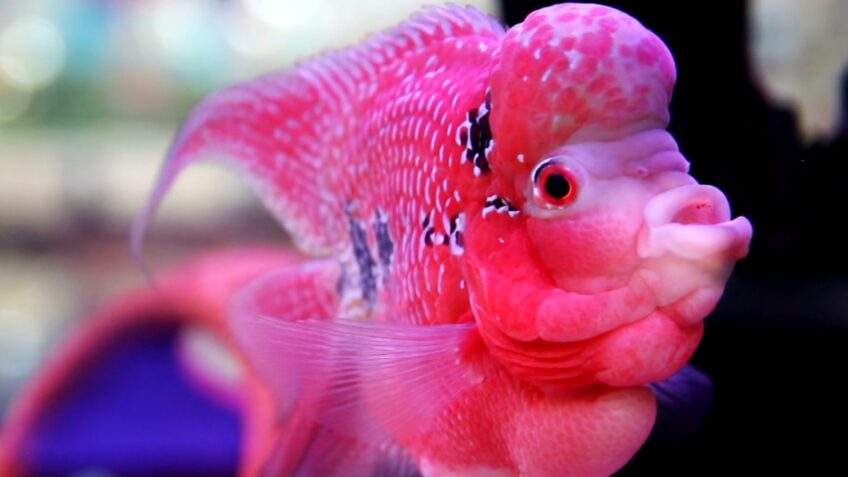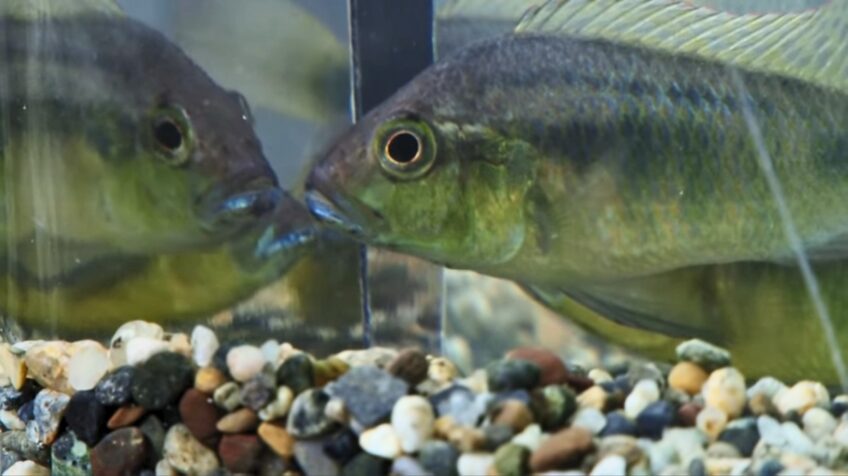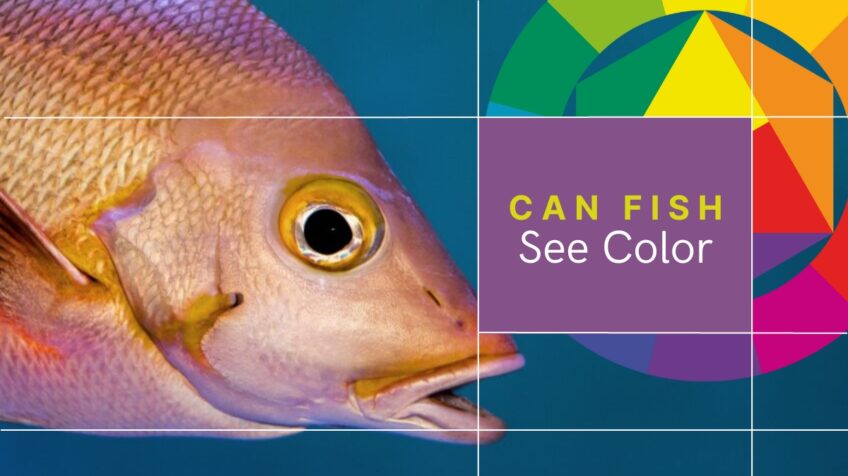Have you ever wondered what the world looks like to a fish? Do they see in black and white, or can they perceive the vibrant colors of the underwater world just as we do? The fascinating science behind underwater vision can help us understand how fish perceive their surroundings, and it might just surprise you. This blog post will dive deep into the wonders of fish vision, exploring the intricacies of their eyes and the role of color in their everyday lives. Join us on this captivating journey beneath the surface, and let’s discover if fish can see color!
The Structure of a Fish’s Eye: A Window into the Underwater World

To understand how fish perceive color, we must first look at the structure of their eyes. Their eyes are similar to those of humans and other vertebrates, with several key differences that are uniquely suited to life underwater.
- Spherical Shape: Their eyes are more spherical than human eyes, allowing them to capture light from a wider range of angles. This is particularly useful in the murky depths of the ocean, where light is scarce.
- Large Pupil: A fish’s large pupil allows more light to enter the eye, enabling it to see better in dim environments. Some deep-sea fish have pupils that cover nearly the entire front of their eyes, maximizing light intake.
- Positioning: Their eyes are usually positioned on either side of the head, providing them with a wide field of view. This enables them to detect predators and prey from various angles, increasing their chances of survival.
- Clear Eyelids: Most of them have transparent eyelids called the nictitating membrane, which protects their eyes from debris and damage without obstructing their view.
The Role of Photoreceptors: Cones and Rods
Their vision relies on photoreceptor cells in the retina called cones and rods. Cones are responsible for detecting color, while rods are sensitive to light intensity and help with low-light vision. In humans, we have three types of cones: red, green, and blue, which allow us to perceive a wide range of colors. Fish, on the other hand, have a more diverse array of cones. For example, some species of fish have up to four or even five types of cones, enabling them to see an even broader spectrum of colors than humans.
The mantis shrimp, though not a fish, is a prime example of an underwater creature with an extraordinary range of color vision – it possesses 16 types of photoreceptor cells. Ones living in deeper waters have fewer cones but more rods, which help them see in the dark, murky depths. In these environments, where color is less important for survival, having more rods enhances their ability to detect movement and shapes in the darkness.
Color Perception in Fish

The presence of multiple types of cones in many fish species means that, yes, fish can indeed see color. However, their perception of color may be different from ours, as it depends on the specific types of cones they possess. Some fish can see colors that are beyond the range of human vision, such as ultraviolet (UV) light.
UV vision is particularly useful for fish, as it enables them to perceive patterns and markings on other fish that are invisible to the human eye. This can be helpful for identifying potential mates or recognizing predators. In fact, some fish species have evolved unique patterns that are only visible under UV light, serving as a secret communication channel among members of the same species.
The Role of Color in Fish Behavior and Communication
Color plays a crucial role in the lives of many fish species, from camouflage and communication to mate selection and species recognition. Let’s take a closer look at how fish utilize color in their underwater world.
Camouflage: Many fish rely on their coloration to blend in with their surroundings, helping them evade predators or sneak up on prey. For example, flounder and other bottom-dwelling fish often have mottled, sandy colors that make them nearly invisible against the ocean floor. Similarly, some open-water fish like the silver-sided Atlantic herring use countershading – a darker color on top and a lighter color on the bottom – to blend in when viewed from above or below.
Communication: They also use color to communicate with one another. Bright colors and patterns can convey information about a fish’s mood, health, or social status. For instance, many cichlid species change their coloration during aggressive encounters or courtship displays, with dominant males often displaying the most vibrant hues.
Mate Selection: In many species, color plays a crucial role in attracting a mate. Males are often more brightly colored than females, with their striking hues acting as a signal of good health and genetic fitness. Female fish may choose their mates based on the intensity or specific colors displayed by the male, increasing the chances of producing healthy offspring.
Species Recognition: They use color to identify members of their own species, facilitating social interactions and helping to avoid interbreeding with closely related species. For example, different species of clownfish have distinct color patterns and markings that enable them to recognize one another in the bustling coral reef environment.
The Impact of Light on Underwater Color Perception
While they can see a wide range of colors, the way these colors appear underwater can be dramatically different from how they appear on land. This is due to the way light behaves as it passes through water. As sunlight penetrates the ocean, the water absorbs different wavelengths of light at different rates. Longer wavelengths, such as red and orange, are absorbed more quickly, while shorter wavelengths like blue and green penetrate deeper.
This means that at greater depths, the underwater world appears increasingly blue and green, with reds and oranges becoming less visible. Ones that live at these depths have adapted their vision to make the most of the available light. Some deep-sea fish have specialized cells called double cones, which are thought to help them see a limited range of colors even in the dim, blue-green light of the deep ocean.
FAQs
How do fish use color for species recognition?
They use color to identify members of their own species, facilitating social interactions and helping to avoid interbreeding with closely related species. Distinct color patterns and markings enable them to recognize one another in their underwater environment, such as the unique patterns found on different species of clownfish.
Are fish born with their adult coloration?
No, many species undergo color changes as they grow and develop. Juvenile fish often have different coloration from their adult counterparts, with some species becoming more colorful or changing patterns as they mature.
Can fish see in the dark?
While they don’t have true night vision, many deep-sea fish have adapted their eyes to see better in low-light conditions.
Can fish perceive polarized light?
Yes, some of them can perceive polarized light, which helps them navigate their environment and detect prey, predators, or mates more effectively. Polarized light sensitivity can be particularly useful for fish living in shallow waters or near the surface, where polarization is more pronounced.
Do fish have a blind spot?
They do have a blind spot, which is located directly in front of their snout and behind their head. However, their wide field of view, thanks to the positioning of their eyes on either side of their head, helps minimize the impact of this blind spot on their overall vision.
Can fish see their own reflection?

They can see their reflection, but their ability to recognize themselves in a mirror varies among species. Some of them may perceive their reflection as another fish and exhibit social or territorial behaviors, while others may eventually learn to use the mirror as a tool for self-examination or navigation.
Can fish see in three dimensions (3D)?
They can perceive depth and see in three dimensions (3D), although their binocular vision (the overlapping field of view from both eyes) is more limited than that of humans. Fish rely on a combination of binocular vision and monocular vision (using one eye at a time) to assess their surroundings and judge distances, which helps them navigate their environment, locate prey, and avoid predators.
Conclusion
The fascinating science behind underwater vision reveals that fish can indeed see color, often in ways that are more complex and versatile than human color perception. The structure of their eyes, the diversity of photoreceptor cells, and their unique adaptations to the underwater environment all contribute to a vibrant, colorful world beneath the waves. From camouflage and communication to mate selection and species recognition, color plays an essential role in the lives of fish, shaping their behavior, interactions, and survival in a world that is both beautiful and perilous. So, the next time you gaze into the depths of an aquarium or the ocean, take a moment to appreciate the extraordinary visual abilities of the fish that call it home.

